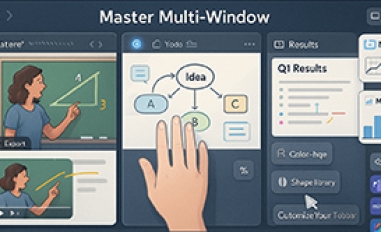Are Interactive Flat Panels Effective in Education?
Learn how to effectively manage and respond to crises in the digital age.
1. About the significance of using smart boards
Data shows that using a smart board can effectively increase student success rates by 16%. This means that we can determine that a student with a 50% success rate in a classroom without smart devices will have a 66% success rate in a classroom. Besides, three main features of smart screens have a significant relationship with student success.
1.1 Student Response System. It is a portable voting device.students use it to get answers to questions. Then the percentage of students who get the correct answer is immediately displayed on the board in the form of a bar graph or pie chart. The use of a voting machine has a 26% impact on student success.Click supports many choice judgments and other question formats for interaction.
1.2 Use of visual tools to present information. This tool includes images and video clips downloaded from the internet, websites such as Google, charts, and so on. The use of this aid was also effective in increasing the success rate of students by 26%.
1.3 Smart whiteboards have intelligent programs that teachers can use to display correct answers or present other materials. These programs include dragging and dropping correct answers to specific locations and revealing information hidden under objects. These exercises are 31% effective in improving student success.
2. How to increase the usage of IFP
A study showed that teachers achieved better results in 23% of cases without a Whiteboard. Some potential problems were identified by recording the lessons of these teachers.
2.1 More use of responding devices but less work on findings. In many classes, teachers simply recorded how many students got the correct answer rather than checking why one answer was better than another.
2.2 Failure to organize or set content correctly. In these cases, teachers combine video clips taken from the Internet or images they want to show important information. They then quickly turn to the flipchart and although the students are impressed with the graphics. Although they do not have time to analyze and interact with the content.
2.3 High use of visual elements. Digital wallchart pages are full of visual stimuli, but it is difficult to recognize what is important in them.
2.4 Strong focus on special features. For example, when teachers who used the technology to achieve poor grades used the virtual applause feature to show correct answers. Teachers' attention focus seemed to be on encouraging features rather than explaining the content.











































